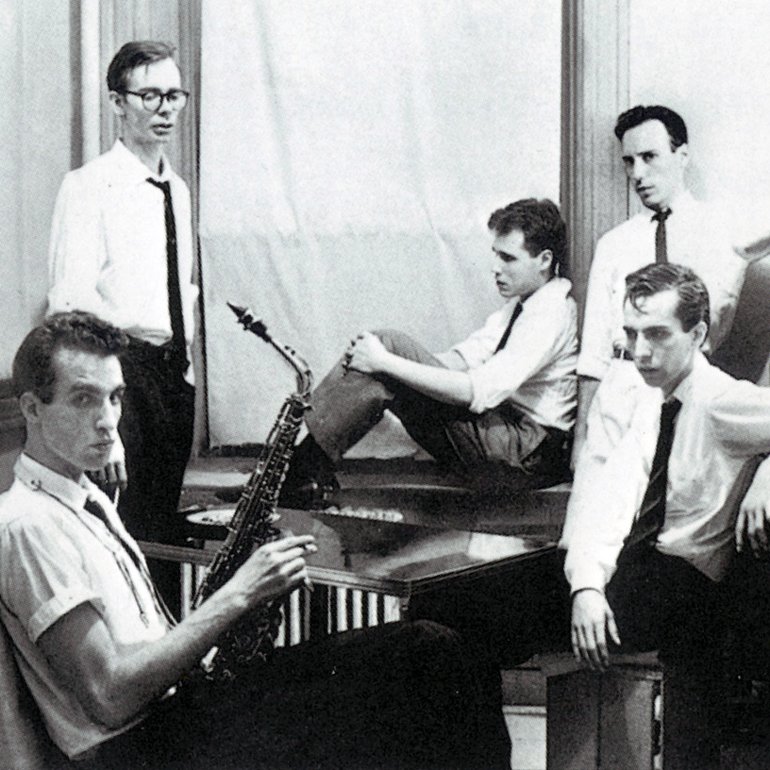

I for one believe that this album is simply creative, and even sounds so in this day in age. Perhaps some could claim that some of the experimentation is thoughtless or that a lot of it is weirdness for weirdness's sake, but that boils down to taste. "Wangling" stands out as a blazing fast bebop tinged beast and shouted “RAR! RAR! RAR!” vocals make their way onto "Conquest of Rar". It’s very slow, but manages to be entrenched in noise and dissonance, with only the drums and bass keeping it together. They even have their own take on a ballad, simply titled “Ballad”.
#Lounge lizard band free
It starts with videogamey synth arpeggios and progresses with entirely angular, amelodic free jazz playing across the band.

They take “Epistrophy” and cut the length in half, picking select parts of it to bend almost beyond recognizability. They take the already strange melody of "Well You Needn't", detune it to make it stranger, and cover it with much harder drums, dissonant piano, and overblown shots of sax. Where Monk's subversions were a bit more subtle, using odd phrasings and note choice, along with things like playing minor standards in major, the Lizards completely deconstruct his work to beautiful effect.

These covers, by comparison, show how directly they can subvert jazz tropes, while simultaneously paying tribute to a jazz artist that took to unraveling the genre's norms himself. There's dissonant piano pounding, tight stop-start passages, and a free jazz freakout to highlight "Au Contraire Arto".Ī particularly interesting choice that defines the album is the addition of two Thelonius Monk covers "Well You Needn't" and "Epistrophy". It's rife with off, No Wave style guitar noise, shrill, Sun Ra flavored electric keys, and schizophrenic lead work on the part of the Luries. In contrast, "Do The Wrong Thing"(a nod to Spike Lee's ever relevant opus) feels wry with it's funky rock-like drums. "Harlem Nocturne" is a decidedly relaxed feeling, laid-back nighttime swing, complete with semi-dissonant keyboard swells, a groovy rhythm section, and stylish sax leads. The songs are digestible, averaging about 3 minutes over the tracklist, but the band showcases a startling amount of dynamism in each. Such a roller coaster is the story for many tracks on this album. This leads the sax into a wild, free feeling solo that ends with the band finishing off with a hard groove. As pianist Evan Lurie and bassist Steve Piccalo build a rock solid foundation, guitarist Arto Lindsay begins to unveil the bands true character with unmusical, noisy scratches and picks on his guitar. Drummer Anton Fier's groove starts to liven with less musical, hard crashes and John Lurie's lively sax leads the romp. One doesn't have to listen long into the wily and dirty swing of opener "Incident on South Street" before the madness starts. In songs such as “Fatty Walks” the band even dabble with tempo changes, which are fairly uncharacteristic of jazz. The melodies often feel dissonant and not catchy in the typical sense. The bass is an immovable floor, always holding a tight groove. They keys and sax are like a greek god or the devil, and can take many confusing and incohesive forms. The guitar is almost always doing something dissonant and awkward. The drums are filled with straighter, rock-influenced grooves and licks. Much in the fashion of those brave few who came before, they take the subtle, smooth, and beautiful musical deconstruction that jazz is defined by and turn it into something very dark, otherworldly, and jagged. While fusion is very much the norm in 2017 and was frequently charted territory by 1981, this doubtlessly felt strange for those listening to it then and still feels strange for many listening now. Guitarist Arto Lindsay happened to be in the noise punk band DNA before this. Theses flavors are complemented with experimental punk rock touches taken from No Wave artists that were prominent in that era's underground. The Lounge Lizards demonstrate a keen yearning for this kind of sonic exploration on their self-titled.Ī New York six piece founded in 1978 by brothers John and Evan Lurie, the Lizards take influence from avant-gardist jazz explorers like Sun Ra, Albert Ayler, Ornette Coleman, and John Coltrane.

The results may be too fast, too free, or too harsh for some, but these characteristics do not make them less valid. There are people who are jazz purists, but what's the point in being that? Art forms are allowed to morph and grow, and are often better for expanding outside of their original, easily typified bubbles.


 0 kommentar(er)
0 kommentar(er)
